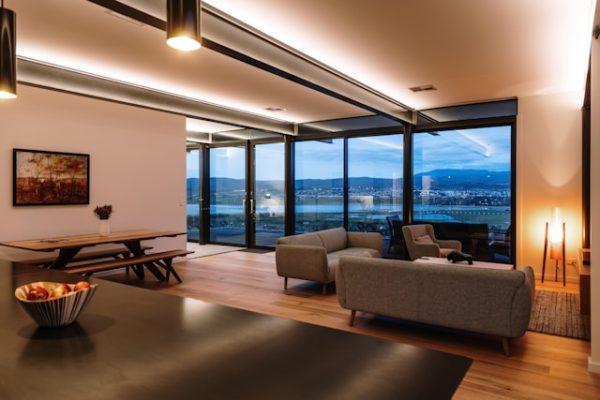
Your home silently speaks volumes about who you are. The colors you choose, the furniture arrangement, the light filtering through your windows—all of it reveals emotional patterns rooted deep in your psyche. Home isn’t just where you live. It’s a mirror of your inner state, constantly reflecting your moods, values, and priorities. Every paint stroke, fabric, and object offers clues to how you process the world around you. Whether it’s chaos or calm, your environment echoes what lives within. This emotional blueprint isn’t accidental; it’s shaped by experiences, memories, and beliefs, often without your conscious awareness.
-
Color Psychology: What Your Palette Says About You
Muted grays may indicate a need for peace, while fiery reds shout passion and energy. Cool blues suggest introspection or a craving for serenity. Every hue taps into psychological triggers—color isn’t just aesthetic, it’s deeply emotional. People with bright, vibrant homes often embrace stimulation and social interaction. Meanwhile, earthy tones show a connection to nature and grounding. Your preferences usually tie back to emotional needs. Subconsciously, you gravitate to what soothes or energizes you. Your home becomes a coping mechanism—its palette tailored to balance internal highs and lows. The shades on your walls, pillows, or artwork offer powerful insight.
-
Rooms with Intention: How Spaces Reflect Mental Zones
A cluttered kitchen or an overly minimalist bedroom can show how you manage stress, creativity, or even relationships. When your spaces carry intentional designs—such as calming nooks for reading or dedicated zones for hobbies—it reflects mental clarity and self-awareness. But even seemingly neglected areas reveal something. A disorganized workspace might hint at mental overwhelm or unprocessed emotions. A curated bathroom, with soft lighting and spa-like fixtures, signals a desire for cleansing, both physical and emotional. That’s where the right bathroom remodeler makes a real difference. They help not just with function, but with creating environments that match the emotional climate you crave.
-
Light and Mood: Illuminating the Emotional Landscape
Light shapes your experience. Dim spaces can comfort or depress, depending on your inner world. Bright rooms awaken optimism and action. Natural light especially brings emotional benefits—it regulates circadian rhythms, supports vitamin D production, and lifts your mood. If you leave windows uncovered, you might seek openness and connection. If you use heavy drapes, you may value privacy or feel the need to retreat. The balance of artificial and natural light reflects how you process stimuli. Smart lighting systems or daylight bulbs can act as mood therapy. Light isn’t just functional—it’s emotional architecture that quietly shapes daily wellness.
-
Furniture Flow: Mapping Control and Chaos
The arrangement of furniture shows how you handle control, boundaries, and personal energy. Open layouts often indicate a comfort with flexibility and connection. Closed or segmented arrangements can reveal a need for containment or order. Some people surround themselves with furniture that physically creates emotional buffers, like oversized couches or room dividers. Others prefer minimalist layouts to avoid sensory overload. The way you navigate your space mirrors how you handle challenges or relationships. Do you move freely, or constantly bump into obstacles? Your furniture flow is a map of your emotional navigation—where you feel stuck, where you need freedom.
-
Personal Artifacts: The Story Your Objects Tell
Objects carry stories, and the ones you keep around say a lot about what matters to you. Whether it’s family photos, travel souvenirs, or a shelf of worn books, these items represent emotional anchors. People tend to display what brings comfort, identity, or pride. If your space lacks personal artifacts, it could reflect detachment or a focus on the future rather than the past. On the other hand, homes packed with sentimental items may reflect nostalgia, or even fear of letting go. What you choose to see every day shapes your emotional climate. Your décor isn’t just style—it’s memory.
-
Clutter as Communication: The Mental Load in Mess
Clutter isn’t just a physical issue—it speaks volumes about your internal state. A messy room may signal creative energy, but it can also reflect decision fatigue, anxiety, or even emotional avoidance. People often accumulate clutter during life transitions or stressful periods. Unfinished projects, random items, or piles of unopened mail hint at areas where mental clarity may lack. On the flip side, obsessively clean spaces can reveal a desire for control or fear of disorder. The level of chaos—or lack of it—communicates how much emotional weight you carry. Your environment becomes a message, revealing what your words might not.
-
The Bedroom Mirror: Sleep, Safety, and Vulnerability
The bedroom holds intimate emotional truths. It’s where you rest, recover, and reflect, making it the most psychologically revealing space. A cozy, layered bed setup shows a desire for comfort and security. Sparse or utilitarian bedding may suggest function outweighs emotional warmth. If you have blackout curtains, noise machines, or mood lighting, you’re likely someone who values controlled relaxation and peace. Your bedroom reflects how you protect your energy. Do you allow light in or block it out? Do you decorate with softness or stark minimalism? This room quietly reveals your relationship with vulnerability, rest, and emotional safety.
-
Kitchen as a Symbol: Nourishment Beyond Food
The kitchen isn’t just about meals—it reflects how you nourish your life and others. A lively, used kitchen may reflect warmth, care, and a desire to connect. People who cook regularly often view food as love, creativity, or health. On the other hand, unused or sterile kitchens can signal a disconnect—maybe from routine, health, or even from family life. Appliances still in boxes, empty pantries, or a lack of seating show emotional distance from nourishment and ritual. How you treat your kitchen speaks to how you care for yourself. It’s not about gourmet meals, but about emotional sustenance.
Your home isn’t just shelter—it’s your emotional reflection. Each room, object, light, and sound carries subconscious meaning. Whether it’s a bathroom upgrade or a spontaneous living room refresh, your design choices aren’t random. They echo your needs, fears, aspirations, and joys. By paying attention to what your home reveals, you can align your outer world with your inner one. Change your environment, and you shift your emotional state. It’s more than style—it’s self-awareness. Your home tells your story. Make sure it’s one that brings you clarity, comfort, and growth.

